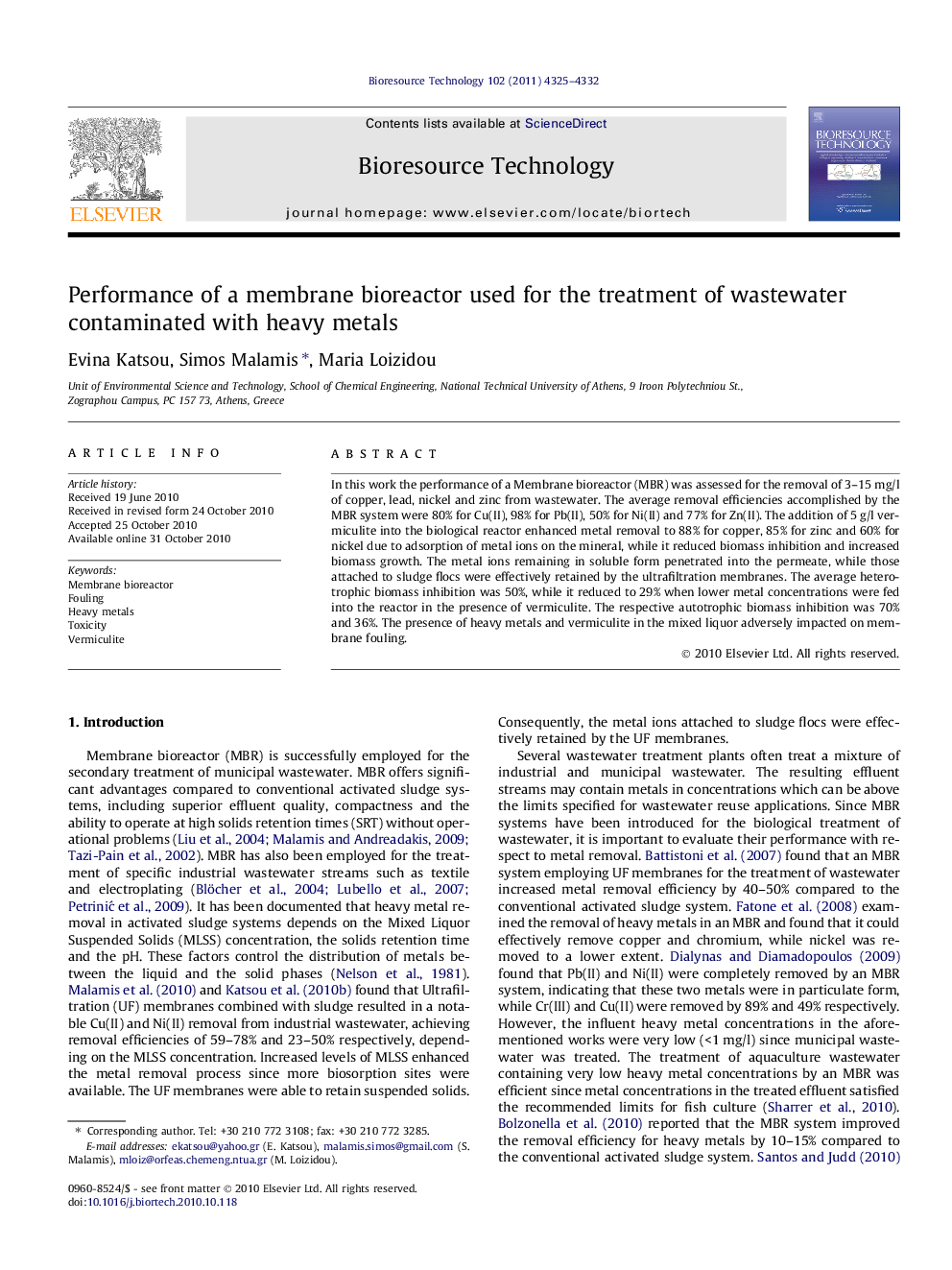| Article ID | Journal | Published Year | Pages | File Type |
|---|---|---|---|---|
| 682206 | Bioresource Technology | 2011 | 8 Pages |
In this work the performance of a Membrane bioreactor (MBR) was assessed for the removal of 3–15 mg/l of copper, lead, nickel and zinc from wastewater. The average removal efficiencies accomplished by the MBR system were 80% for Cu(II), 98% for Pb(II), 50% for Ni(II) and 77% for Zn(II). The addition of 5 g/l vermiculite into the biological reactor enhanced metal removal to 88% for copper, 85% for zinc and 60% for nickel due to adsorption of metal ions on the mineral, while it reduced biomass inhibition and increased biomass growth. The metal ions remaining in soluble form penetrated into the permeate, while those attached to sludge flocs were effectively retained by the ultrafiltration membranes. The average heterotrophic biomass inhibition was 50%, while it reduced to 29% when lower metal concentrations were fed into the reactor in the presence of vermiculite. The respective autotrophic biomass inhibition was 70% and 36%. The presence of heavy metals and vermiculite in the mixed liquor adversely impacted on membrane fouling.
